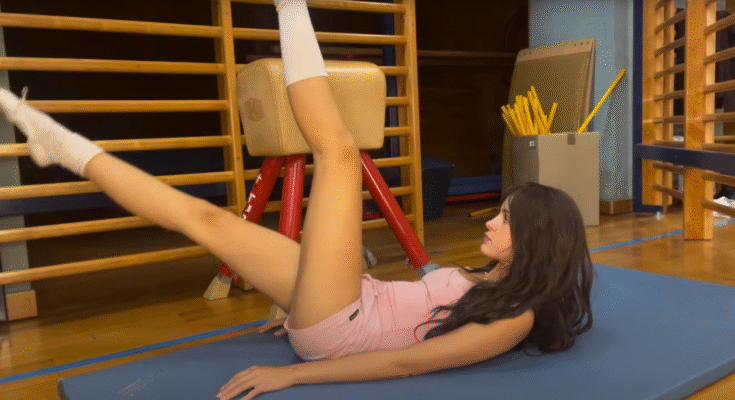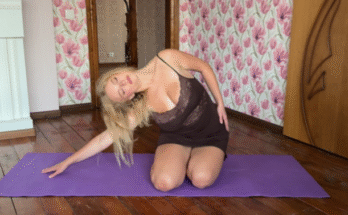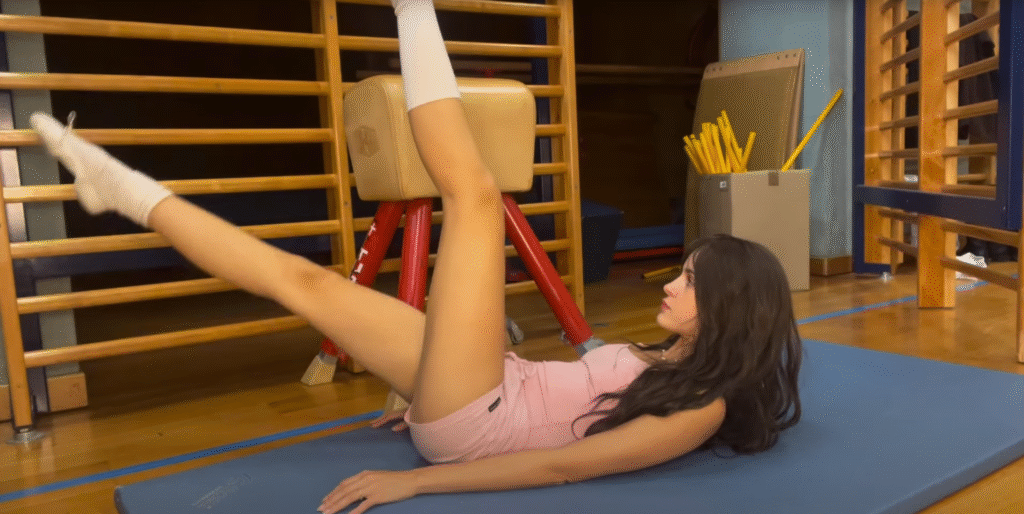
The morning light streams through the tall studio windows, casting golden reflections on the polished wooden floor. The room smells faintly of rosin and fresh air, and a soft melody hums from the speaker in the corner. Standing at the barre, poised and graceful, is Alice — a ballet instructor known for her calm voice, precise movements, and the signature warmth she brings into every class.
Today’s session is all about a quick ballet warm-up — a short but powerful routine designed to prepare the body for dancing, stretching, or simply starting the day with elegance and energy. With her bright smile and a gentle nod, Alice begins: “Let’s wake up the body, open the joints, and connect with our inner rhythm.”
The Beauty of Ballet Warm-Ups
Ballet warm-ups are unique. Unlike typical stretches, they’re graceful, rhythmic, and deeply connected to both breath and music. Every movement is intentional — a preparation not just for physical performance but for the artistry that follows.
Alice always reminds her students: “Ballet begins long before the first dance step. It starts here — in the awareness of how your body feels, how your muscles awaken, how your breath flows.”
This 15-minute warm-up is short enough for busy mornings yet comprehensive enough to prime the entire body. Whether you’re a dancer, fitness enthusiast, or someone who simply loves the elegance of ballet, Alice’s routine offers the perfect blend of poise and power.
Step 1: Breathing and Posture Alignment
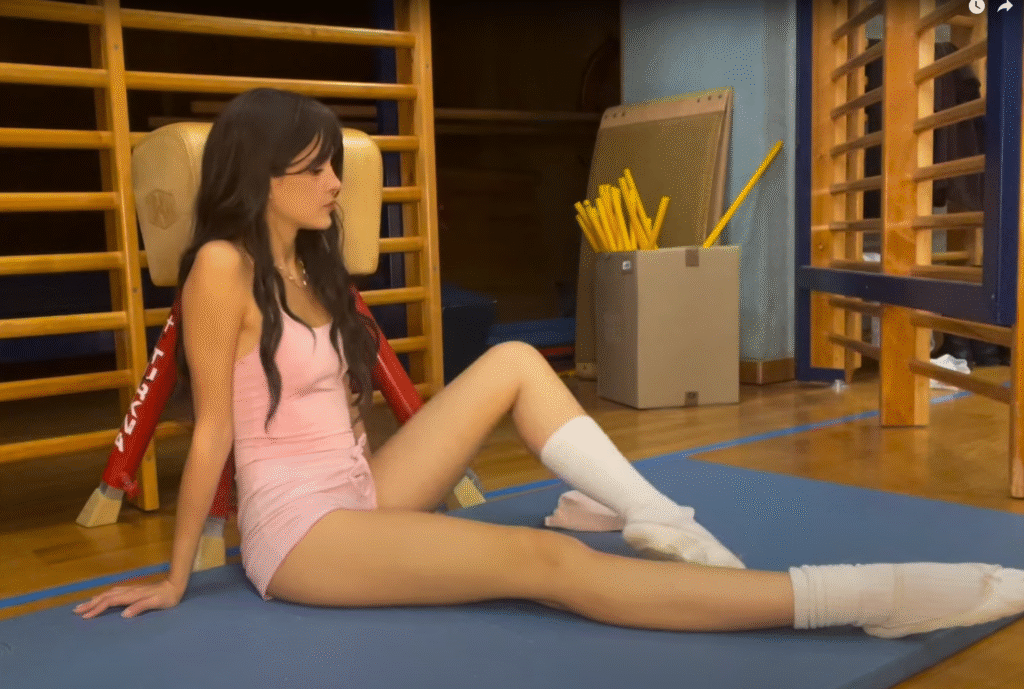
The warm-up begins with posture. Alice stands tall in first position — heels together, toes turned out slightly, spine elongated. She takes a deep breath, lifting her arms gently into fifth position, then exhales as she lowers them gracefully.
“Before we move,” she says softly, “we breathe.”
She guides everyone through three slow breaths, emphasizing the alignment of the shoulders, ribs, and hips. This moment of stillness is about awareness — grounding the body before motion begins.
Step 2: Gentle Neck and Shoulder Rolls
Next, Alice begins slow neck rolls, releasing tension that often accumulates from daily activities. The head tilts side to side, forward and back, never rushed. Then come shoulder rolls, both backward and forward, adding fluidity to the upper body.
She smiles as she moves, her long hair tied neatly in a bun. “Feel each roll,” she says. “Let the stiffness dissolve.”
These small, controlled movements may seem simple, but they awaken the muscles that stabilize the arms and upper spine — essential for graceful port de bras (arm movements) in ballet.
Step 3: Arm and Wrist Warm-Up
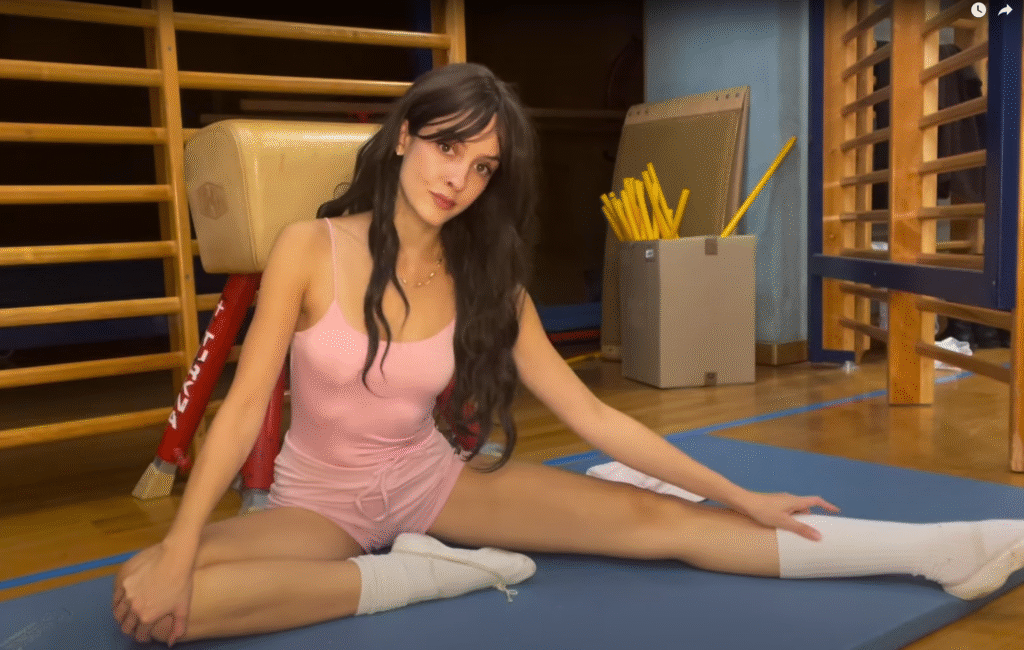
From there, Alice transitions to arm circles and wrist articulations. She lifts her arms slowly to the side, traces soft circles through the air, then rotates her wrists delicately, as if painting invisible swirls.
“This is where expression begins,” she explains. “Even your wrists tell a story in ballet.”
Her movements are mesmerizing — fluid, elegant, precise. The way she extends her fingers, maintaining energy from shoulder to fingertip, embodies the artistry of dance itself.
Step 4: Core Activation
Now it’s time to engage the center — the core, the foundation of balance. Alice places her hands lightly on her hips and performs small standing crunches, drawing her navel in as she lifts one knee at a time.
She keeps her posture tall, movements slow and deliberate. “Your core is your control,” she says. “Without it, you can’t truly balance or move with grace.”
After ten controlled repetitions, she flows seamlessly into side bends, elongating each side of her torso while maintaining stability. The combination wakes up the obliques, spine, and abdominal muscles — crucial for pirouettes, arabesques, and all dynamic dance sequences.
Step 5: Leg and Hip Mobilization
Alice moves gracefully to the barre. Her left hand rests lightly on the wooden surface, and her right leg begins a slow series of swings forward and back.
“Let your leg move freely from the hip socket,” she instructs. “Don’t force the height — feel the mobility.”
The gentle leg swings improve blood flow and flexibility in the hip flexors and hamstrings. After a few repetitions, she switches sides, ensuring balance.
Next, she transitions into hip circles — slow, circular motions that loosen the joints and prepare them for turnout. “The hips are where your freedom of movement begins,” Alice reminds, moving with precision and grace.
Step 6: Demi-Pliés and Relevés
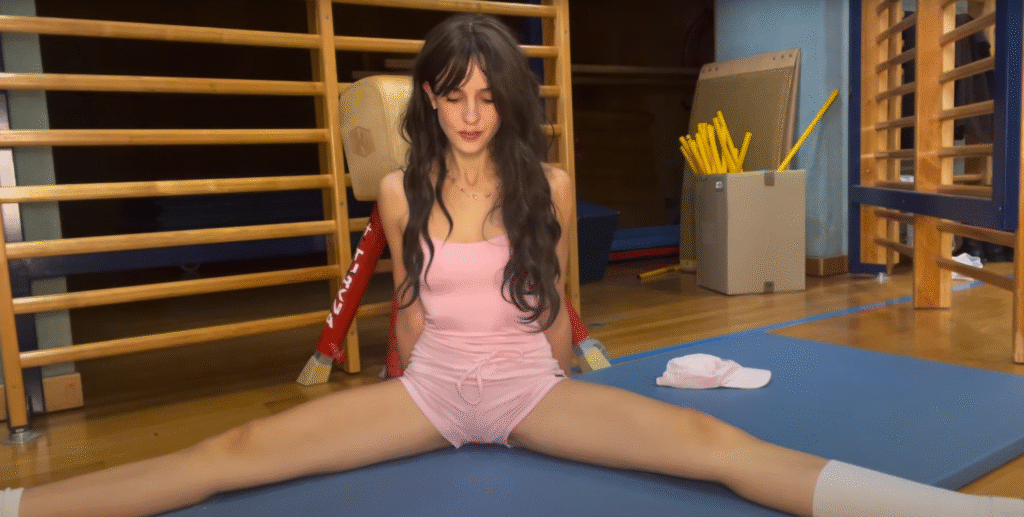
Now comes the heart of every ballet warm-up — the demi-plié. With heels together in first position, Alice bends her knees slightly, keeping her back straight and core engaged. “Imagine sliding down an invisible wall,” she says, emphasizing control and smoothness.
The movement strengthens the quadriceps and calves while gently opening the hips and knees. She repeats this in second position, where the feet are placed wider apart.
After several repetitions, she rises onto her toes in relevé, balancing for a few seconds. “Lift through the crown of your head,” she says, her voice encouraging yet calm. “Feel your strength, your balance, your grace.”
Each rise and fall is like a wave — elegant, measured, and perfectly timed to the music.
Step 7: Tendu and Dégagé
With her body now warm and alert, Alice moves into tendu — one of ballet’s most fundamental exercises. Sliding her foot along the floor, she points her toes until only the tips touch, then returns with control.
“Tendu teaches discipline,” she says, performing a series of precise repetitions. “Every inch of the movement matters — from heel to toe, and back again.”
From tendu, she transitions into dégagé, lifting the foot slightly off the floor, adding a touch of sharpness to the motion. This not only strengthens the ankles and arches but also refines coordination and timing.
Her students follow in sync, the rhythm of their feet creating a soft brushing sound against the floor.
Step 8: Gentle Stretches
After the strengthening exercises, Alice leads the class into a short series of stretches. She folds forward, lengthening her hamstrings, then moves into a deep lunge to release the hips.
“Don’t rush,” she says gently. “Your muscles are awake now — let them lengthen.”
Her movements flow seamlessly — a forward fold becomes a graceful backbend, a side stretch turns into a soft twist. Every transition feels effortless, like a dance in itself.
The stretch sequence ends with Butterfly Pose, where she gently presses her knees toward the floor, opening her inner thighs. “This is where we find softness,” she whispers. “Ballet is strength wrapped in gentleness.”
Step 9: Mini Balance Challenge
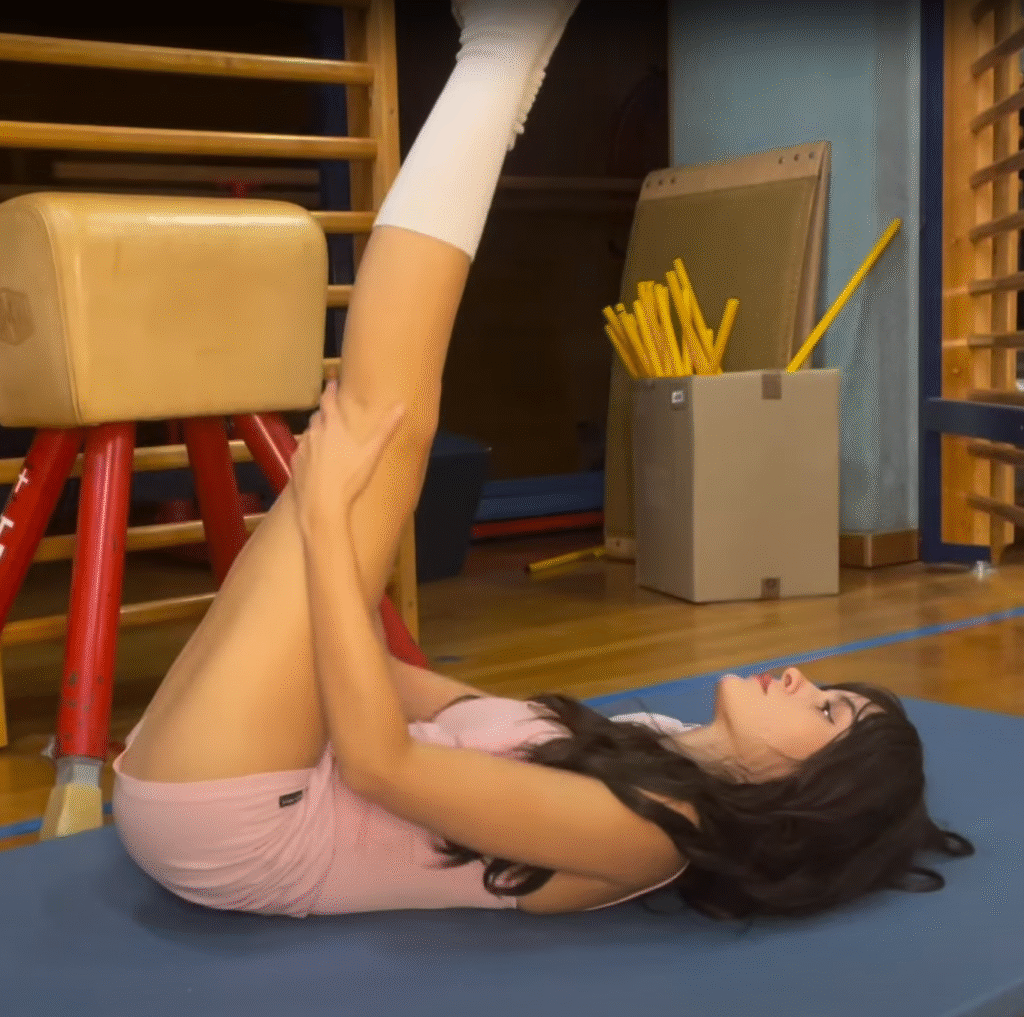
Before closing the warm-up, Alice introduces a brief balance exercise. Standing in first position, she lifts one leg into passé, holding her posture tall and her gaze forward.
“Find your center,” she says. “Balance comes from within — not just muscles, but focus.”
The challenge improves coordination, stability, and confidence — vital qualities for every dancer. Even beginners find joy in holding the pose, wobbling a little, then regaining control.
Step 10: Finishing Gracefully
To finish, Alice returns to slow breathing, lifting her arms overhead once more. The music softens, and the atmosphere feels peaceful yet energized.
“Thank yourself for showing up today,” she says with a warm smile. “Even a short warm-up like this nourishes your body, awakens your soul, and connects you to the rhythm of life.”
She bows slightly — the traditional ballet reverence — symbolizing gratitude to the music, the movement, and the practice itself.
The Afterglow
As the class ends, the studio hums with quiet energy. Everyone feels lighter, taller, and more alive. Alice takes a sip of water, still glowing with that dancer’s poise that seems to come from within.
A student approaches and says, “It’s amazing how just fifteen minutes can make my whole body feel open.”
Alice smiles. “That’s the beauty of ballet. It’s not about how long you practice — it’s about how present you are when you move.”
A Routine for Every Day
This Quick Ballet Warm-Up with Alice 🩰 isn’t just for dancers. It’s a routine anyone can enjoy — to boost flexibility, improve posture, or start the day with a touch of elegance. It strengthens the legs, awakens the hips, builds balance, and brings mindfulness into motion.
For Alice, every warm-up is a reminder of why she loves ballet: not just the beauty of performance, but the quiet discipline, the grace in every detail, the poetry written through movement.
And as the last note of music fades, she closes her eyes and smiles softly. “Every movement,” she says, “is a chance to fall in love with your body’s rhythm again.”
